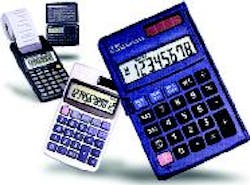100 years ago in American Machinist
Calculators have been around in one form or another since antiquity, but the desktop calculator as we know it has its roots in the early nineteenth century when Charles Babbage, in what could be described as an intellectual tour-de-force, developed most of the basic ideas for the modern calculator. However, before World War I, desktop calculators were large, expensive and lent themselves more to scientific than to business calculations. One reader thought to be helpful by providing a "trick" to adding long columns of numbers. Most of us have been using this trick in one form or another since grade school, but we have been doing less and less mental calculations since calculators started growing smaller and cheaper. For those of us with small children and grandchildren, here is a small reminder of how to do it.
The "trick" consists of putting down a dot for every ten and adding the unit figures until the column is finished.
